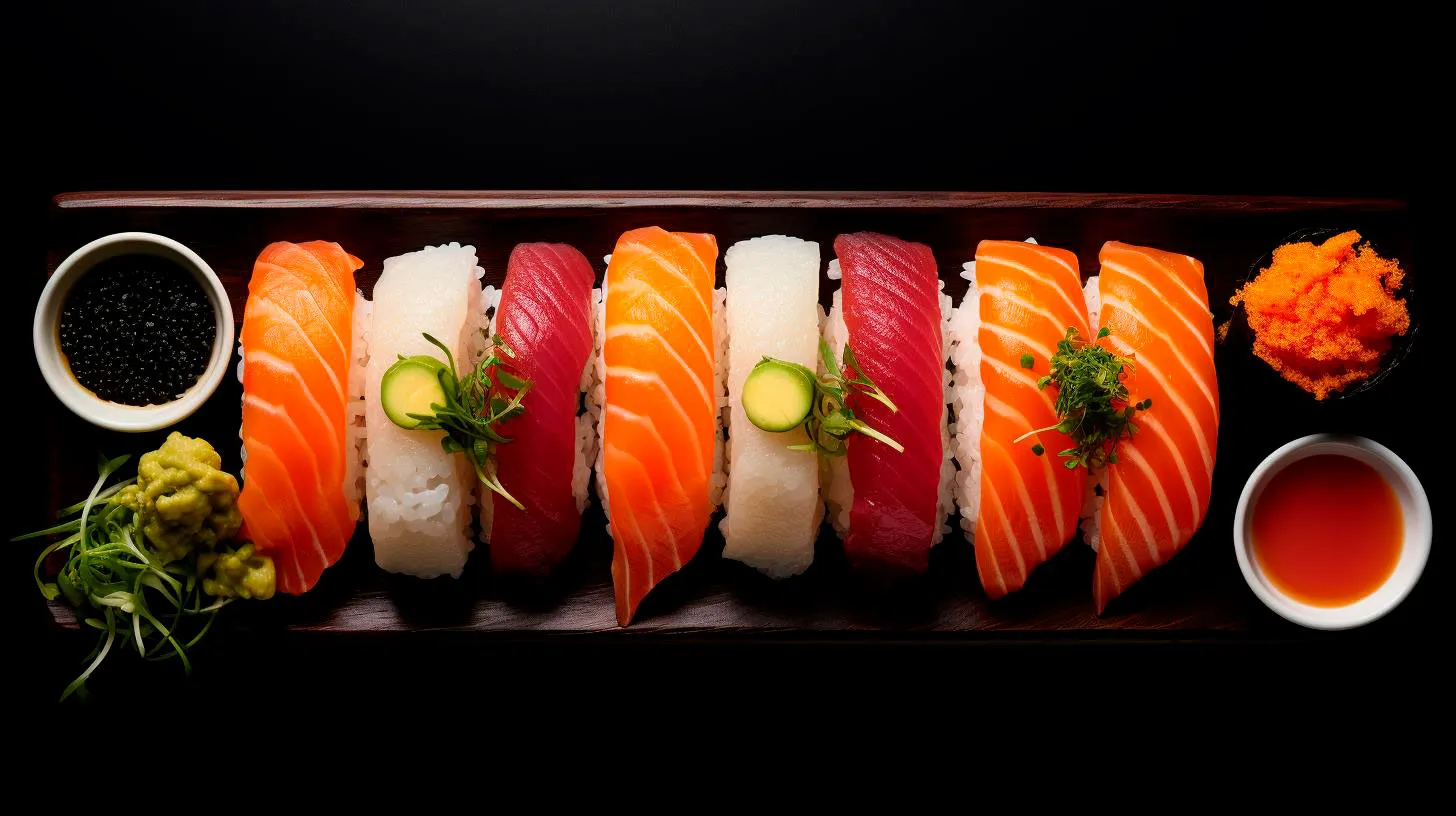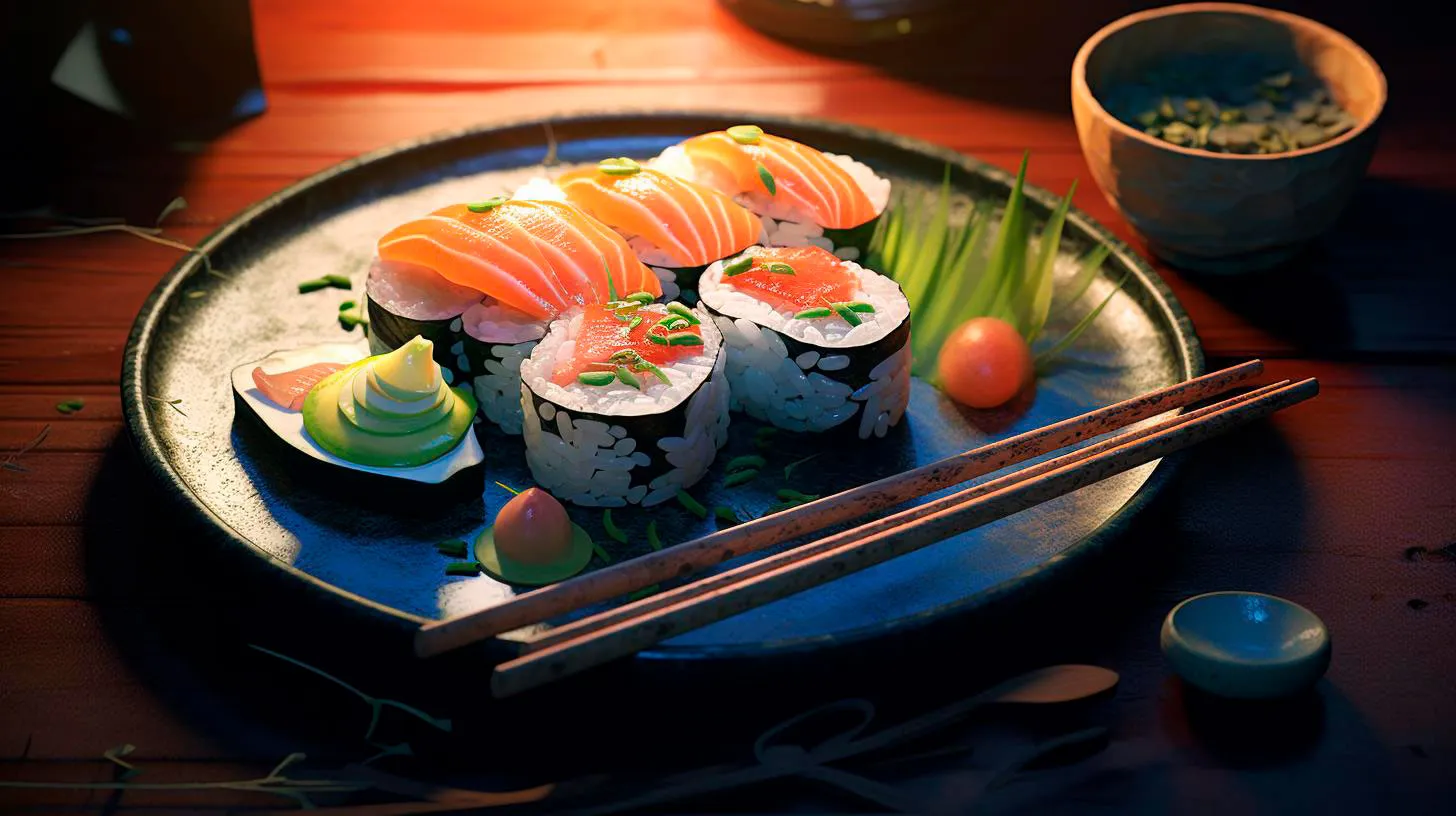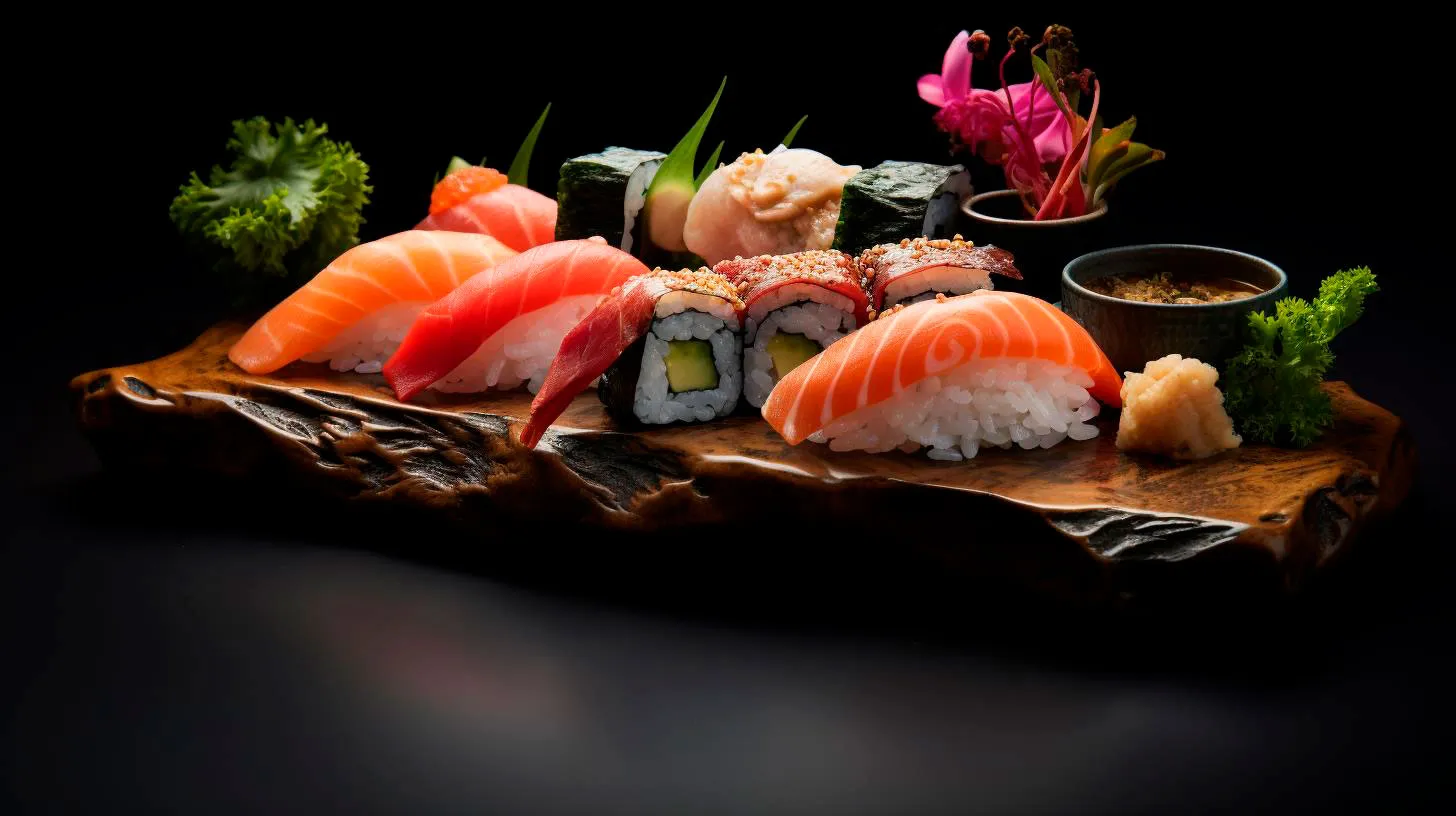Exploring the Science Behind Sushi Rice Texture and Mouthfeel
The texture and mouthfeel of sushi rice play a significant role in enhancing the overall dining experience. In this article, we will delve into the science behind sushi rice texture and mouthfeel, uncovering the secrets that make it such a crucial element in the art of sushi making.
What Makes Sushi Rice Different?
Sushi rice, also known as shari, is the most critical ingredient in sushi. Unlike ordinary rice, sushi rice is short-grain and vinegared, giving it a distinctive flavor and sticky texture. The unique characteristics of sushi rice are achieved through a combination of cooking techniques and the addition of sushi vinegar.
Starch Content and Gelatinization
Sushi rice contains a higher amount of starch compared to regular rice varieties. When sushi rice is cooked, the starch granules absorb water, swell, and gelatinize. This process is responsible for the sticky texture of sushi rice, allowing it to hold its shape when formed into nigiri or rolls.
Key Takeaway: The starch content in sushi rice is essential for achieving the desired sticky texture, ensuring that the sushi rolls hold their shape.
Polishing the Rice
Prior to cooking, sushi rice undergoes a unique process known as polishing, where the outer bran layer is removed. This process not only improves the rice’s appearance but also affects its texture. The removal of the bran layer results in smoother grains that stick together better when rolled or shaped.
Key Takeaway: Polished sushi rice grains are smoother, allowing for better adherence when forming sushi rolls or nigiri.
The Impact of Rice Vinegar
Sushi rice is not complete without the addition of rice vinegar, which imparts a tangy flavor and enhances the overall taste of sushi. However, rice vinegar also serves another essential purpose – it helps balance the pH of the rice, ensuring the perfect texture and mouthfeel.
Acidification and pH Balance
When rice vinegar is added to sushi rice, the pH of the rice grains decreases. This acidification process makes the rice softer and more pliable, resulting in a desirable mouthfeel. The acid also prevents the growth of bacteria, making sushi safer for consumption.
Key Takeaway: The addition of rice vinegar balances the pH of sushi rice, creating a softer texture and a safer dining experience.
The Role of Rice Cooking Techniques
Perfectly cooked sushi rice is the backbone of any exceptional sushi dish. Various cooking techniques can influence the final texture and mouthfeel of the rice.
Water-Rice Ratio
The water-to-rice ratio used in cooking sushi rice is critical. Generally, a 1:1.1 ratio works well, ensuring the rice achieves the desired stickiness without being overly moist.
Key Takeaway: Maintaining the proper water-to-rice ratio is crucial for achieving the ideal texture in sushi rice.
Steaming and Resting
After washing the sushi rice, it is traditionally cooked by steaming. Steaming allows the rice to absorb moisture evenly, resulting in a cohesive texture. Resting the cooked rice for about 10 minutes helps to distribute moisture further, making the rice ideal for shaping into sushi rolls or nigiri.
Key Takeaway: Steaming sushi rice and allowing it to rest evenly distributes moisture and enhances the rice’s cohesive texture.
Sushi rice is a remarkable creation that showcases the intricate artistry of sushi making. Understanding the science behind the texture and mouthfeel of sushi rice not only elevates our appreciation for this beloved dish but also empowers us to create sushi experiences that truly tantalize our taste buds.
- Higher starch content in sushi rice results in its sticky texture.
- Polishing sushi rice creates smoother grains that stick together better.
- Rice vinegar balances the pH of sushi rice, creating a softer texture.
- Perfecting water-to-rice ratio and cooking techniques are crucial for achieving the desired texture.
How Sushi Rice Variety Affects the Taste and Texture of Sushi
So, let’s explore how different rice varieties can significantly affect the final outcome of your sushi creation.
The Art of Sushi Rice
Sushi, a blend of vinegar-flavored rice and various seafood or vegetables, is a culinary art form in itself. While fresh and top-notch ingredients are essential, the rice used for sushi is equally important, acting as the catalyst that brings all the flavors and textures together harmoniously. The ideal sushi rice is sticky yet firm, with a subtle tanginess imparted by the vinegar that coats each grain.
Traditionally, sushi rice is made using a short-grain variety of rice, such as Japonica or Calrose. However, with the global popularity of sushi, chefs and home cooks have explored different types of rice to experiment with unique flavors and textures.
The Role of Rice Variety in Sushi
The choice of rice variety has a significant impact on the taste and texture of sushi. Here are some key factors to consider:
1. Grain Size Matters
- Short-grain rice: This variety is the classic choice for sushi due to its stickiness and ability to hold shape when rolled.
- Medium-grain rice: Slightly less sticky, this variety offers a lighter texture that some sushi enthusiasts prefer.
- Long-grain rice: While not traditionally used for sushi, long-grain varieties can add a unique twist with their fluffier texture.
2. Stickiness and Texture
- High-starch rice: Rice with a higher starch content tends to be stickier, making it ideal for sushi. The stickiness helps the rice hold its shape when forming sushi rolls.
- Lower-starch rice: Lower-starch varieties, on the other hand, offer a more distinct grain texture, perfect for sushi enthusiasts who enjoy a slightly chewier experience.
Advantages of Exploring Different Rice Varieties
While sticking to the traditional short-grain rice for sushi is a safe bet, venturing into other rice varieties provides a range of flavor profiles and textures that can elevate your sushi experience. Here are a few advantages of exploring different rice varieties:
1. Enhanced Flavor Profiles
Each rice variety brings its own unique flavors to the table. By experimenting with different rice types, you can unlock an exciting range of tastes that complement various ingredients, from delicate fish to bold vegetables.
2. Textural Delights
Changing the rice variety can profoundly impact the texture of your sushi. Whether you prefer a stickier, firmer, or chewier mouthfeel, different rice types allow you to tailor your sushi experience to your personal preferences.
3. Aesthetic Appeal
Using different rice varieties adds visual interest to your sushi creations. Imagine the striking contrast of colors when your fresh sashimi rests on a bed of vibrant purple rice, made from varieties like black rice or even a seasoning blend with butterfly pea flowers.
Key Takeaways
The variety of rice used in sushi directly influences the taste and texture of the final dish. To summarize our exploration:
- The choice of rice variety affects the stickiness, grain texture, and overall mouthfeel of your sushi.
- Experimenting with different rice types can enhance flavor profiles and bring a unique twist to your sushi creations.
- Don’t be afraid to think outside the box and try alternative rice varieties for a visually striking sushi presentation.
Remember, sushi is an art form, and choosing the right rice variety enables you to unleash your creativity and make every bite a memorable experience. So go ahead, embark on your sushi adventures armed with this newfound knowledge, and savor the tasteful wonders you create!
The Role of Rice in Enhancing Sushi Flavor Profile
The choice of rice used in sushi preparation can make all the difference in creating a memorable dining experience. In this article, we will explore the significance of rice in sushi and how it contributes to the unique taste that sushi lovers adore.
The Importance of Rice in Sushi
Contrary to popular belief, sushi does not solely rely on fish or other ingredients to create its distinct flavor. The rice used in sushi serves as the foundation and key component to the overall taste. Sushi rice, known as “shari,” is carefully prepared to achieve the perfect texture, stickiness, and flavor to complement the fillings and toppings.
Characteristics of Sushi Rice
The choice of sushi rice is not arbitrary. It has several unique characteristics that make it ideal for sushi preparation. These include:
- Short-Grain: Sushi rice is typically short-grain rice, which provides the desired stickiness and cohesiveness necessary for rolling sushi.
- White and Polished: Sushi rice is usually white and polished to remove the outer layer, resulting in a smooth and glossy texture.
- Vinegar Seasoning: Sushi rice is seasoned with a mixture of rice vinegar, sugar, and salt. This seasoning gives sushi rice its distinct tangy flavor and helps preserve its freshness.
The Role of Rice Vinegar
The addition of rice vinegar to sushi rice is what sets it apart from regular steamed rice. The rice vinegar adds a delicate acidity that balances the richness of the fillings and toppings used in sushi. It not only enhances the flavor but also helps in prolonging the shelf life of sushi by inhibiting bacterial growth.
The Impact on Sushi Flavor
The type of rice used in sushi can significantly impact the overall flavor profile. Here are a few key reasons why rice plays such a vital role:
- Texture and Mouthfeel: Sushi rice should be sticky enough to hold the shape but still have a soft and chewy texture when eaten. It creates a desirable mouthfeel that complements the ingredients and makes each bite enjoyable.
- Balance and Harmony: Sushi is all about achieving a balance of flavors. The neutral taste of sushi rice acts as a canvas, allowing the flavors of the toppings and fillings to shine. It harmonizes the different components and prevents any single element from overpowering the dish.
- Contrasting Elements: Sushi rice provides a contrast to the flavors and textures of the other ingredients. Its mild sweetness and tanginess create a delightful contrast with the savory fish or vegetables, resulting in a well-rounded and satisfying taste experience.
Key Takeaways
Rice plays a pivotal role in enhancing the flavor profile of sushi. Its unique characteristics, such as stickiness and perfect seasoning, contribute to the overall taste that sushi enthusiasts crave. Remember the following key takeaways:
- Choose short-grain rice for its stickiness and cohesiveness.
- Use white and polished rice for a smooth and glossy texture.
- Season sushi rice with a vinegar mixture to achieve the desired tangy flavor.
- The right rice enhances the overall texture, balance, and harmony of sushi.
By understanding and appreciating the role of rice in sushi, you can deepen your appreciation for this beloved culinary art form. The next time you indulge in a plate of sushi, take a moment to savor the perfect combination of rice, fish, and flavors.



